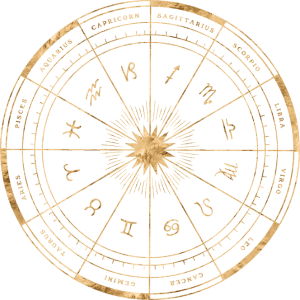- FAMILY MEMBERS (04) CONSULTATION
- Black Magic Removal & Tantric Consultation
- VASTU IN HOME & OFFICE CONSULTATION
- Complete Life Consultation
- Emergency Consultation
- Childbirth & Future Consultation
- MARRIAGE MATCH MAKING CONSULTATION
- MARRIAGE & RELATIONSHIP CONSULTATION
- HEALTH & MEDICAL CONSULTATION
- Online Video Consultation
- Business & Career CONSULTATION
- Follow-up Session

Tantra: Unveiling the Sacred Path of Energy and Consciousness
Tantra is one of the most misunderstood spiritual traditions in the world. Often associated with exotic rituals or misunderstood as purely sexual practices, Tantra is actually a profound and ancient system of spiritual philosophy and practice that originated in India. Rooted in the Vedic and Tantric traditions, Tantra is a path of liberation, self-realization, and inner awakening.
At its core, Tantra is the science of energy—how it moves in the body, the cosmos, and consciousness. It is a holistic system that integrates the body, mind, and spirit, helping individuals transcend duality and experience unity with the divine.
Origins of Tantra
The word Tantra comes from the Sanskrit root words “tan” (to expand) and “tra” (instrument or tool), which together can be translated as “a tool for expansion” or “framework”. It is believed to have emerged around 500 CE, though its roots are much older, possibly linked to pre-Vedic shamanic and yogic traditions.
Tantra evolved as a reaction to orthodox Vedic rituals, focusing more on direct experience, inner transformation, and personal spiritual empowerment, rather than external rites and caste hierarchies.
Tantric teachings are found in both Hinduism and Buddhism, particularly in Shaiva, Shakta, and Vajrayana traditions. Each lineage has its own methods, deities, and texts (called Tantras), but the ultimate aim is the same: spiritual liberation (moksha) through the awakening of inner energy.
Key Principles of Tantra
Tantra is a non-dual philosophy, which means it sees the divine in everything—both the material and spiritual worlds. Here are some foundational principles:
1. Everything is Sacred
In Tantra, there is no division between the mundane and the spiritual. Every action—eating, breathing, walking, loving—can become a sacred ritual if done with awareness.
2. Shiva and Shakti
Tantra is deeply rooted in the symbolism of Shiva (consciousness) and Shakti (energy). These two cosmic forces represent masculine and feminine energies, stillness and movement, void and form. Enlightenment comes when these forces are balanced and unified within the practitioner.
3. Kundalini Energy
One of the most important concepts in Tantra is Kundalini—a dormant spiritual energy located at the base of the spine. Through Tantric practices, this energy is awakened and guided upward through the chakras, leading to expanded awareness and ultimate union with the divine.
4. The Chakras
Tantra teaches that the body has seven energy centers, or chakras, aligned along the spine. Each chakra governs different aspects of our physical, emotional, and spiritual life. Working through these chakras helps in releasing blockages and opening pathways to higher consciousness.
Types of Tantra
There are two broad classifications:
1. Right-Handed Tantra (Dakshina Marga)
This is more traditional and symbolic, involving mantra (sacred sound), meditation, yoga, and rituals without external sensory indulgence. It is widely accepted and practiced in many spiritual communities.
2. Left-Handed Tantra (Vama Marga)
This is more radical and esoteric, sometimes involving taboo-breaking rituals, including the use of alcohol, meat, or sexuality as a way to transcend social conditioning. These practices are not for everyone and require deep guidance and purity of intention.
Common Tantric Practices
While Tantra encompasses a vast array of rituals and philosophies, here are some core practices:
1. Mantra
Chanting sacred syllables or phrases to activate divine vibrations and shift consciousness. Examples include Om, Hreem, Kleem, and So'ham.
2. Yantra
Sacred geometrical diagrams used for meditation and concentration, often representing deities and universal forces.
3. Mudra
Symbolic hand gestures that channel energy and awaken spiritual awareness.
4. Meditation and Visualization
Focusing the mind on chakras, deities, light, or inner experiences to expand awareness and develop spiritual insight.
5. Pranayama
Breath control practices to regulate the life force (prana) and purify the mind and body.
6. Ritual Worship (Puja)
Detailed ceremonies involving offerings, chanting, and invocation of divine energies, often to the goddess (Devi) or cosmic forces.
7. Sacred Sexuality
Contrary to popular belief, sexual Tantra is only a small part of the tradition and is always approached with discipline and spiritual intention. It aims to transform sexual energy into spiritual bliss, not for pleasure alone but as a gateway to divine union.
Tantra and the Divine Feminine
One of Tantra’s most empowering aspects is its reverence for the Divine Feminine, often embodied as Shakti, Kali, Durga, or Tripura Sundari. Unlike many patriarchal spiritual systems, Tantra elevates the feminine as the source of creation and spiritual power.
Tantric goddess worship emphasizes qualities like power (Shakti), wisdom (Jnana), compassion (Karuna), and transformation (Moksha). In this tradition, both male and female energies are essential for wholeness and enlightenment.
Misconceptions about Tantra
Because of its openness to sexuality, Tantra has often been misunderstood or distorted, especially in the West. Let’s clarify a few things:
Myth 1: Tantra is all about sex.
Truth: Tantric sexuality is only one aspect of a vast spiritual system. True Tantra is about transformation and union with the divine—not indulgence.Myth 2: Tantra is dark or black magic.
Truth: While some left-hand paths explore taboo practices, mainstream Tantra is rooted in light, compassion, and liberation.Myth 3: Anyone can practice advanced Tantra.
Truth: Tantra requires deep respect, guidance, and maturity. Improper practice can lead to imbalance or confusion.
Benefits of Tantric Practice
Practicing Tantra with sincerity and discipline can lead to:
Deep self-awareness and spiritual awakening
Improved energy balance and emotional healing
Expanded creativity, intuition, and insight
Better relationships, rooted in respect and connection
Inner peace and connection with the divine
Freedom from limiting beliefs and social conditioning
Tantra in Modern Life
While ancient Tantra involved rituals, temples, and initiations, modern Tantra can be integrated into daily life. You can bring Tantra into your life by:
Practicing mindful breathing and body awareness
Using mantras and meditation for inner clarity
Honoring your body as sacred, not sinful
Developing respectful and conscious relationships
Embracing both your light and shadow sides with compassion
Whether you're a spiritual seeker, yogi, healer, or simply curious, Tantra offers tools to deepen your journey—not by escaping life, but by embracing it fully.
Final Thoughts
Tantra is not a religion or dogma—it is an inner technology, a sacred path to awakening your full human potential. It teaches that the divine is not somewhere far away, but within you, in your breath, in your body, in every moment of life.
In a world filled with distraction, division, and disconnection, Tantra reminds us to return to ourselves—to the sacred, sensual, powerful truth of who we are.
It is not a quick fix or a trendy technique. It is a lifelong path, rich with wisdom, devotion, and transformation.
As the Tantric masters say:
"Yatha Brahmande, Tatha Pinde"
(As in the macrocosm, so in the microcosm)Discover the universe—not outside, but within you.

